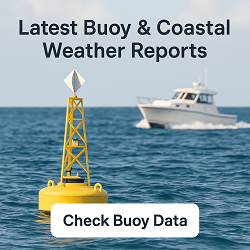Community Medical Center, IL Weather Forecast and Current Conditions
Current Conditions From Nearby Local Station Switch to Metric Units
Feels Like N/A
at
Current Conditions From Nearby Local Station Switch to Metric Units
Feels Like N/A
at
Point Forecast at a Glance







7-Day Temperature Trend
Week Ahead Summary
High temperatures dip from 46°F to a low of 33°F mid-week, then warm to 65°F. Mostly dry conditions with only one day showing snow chances.
Climate Context
Temperatures are expected to be near normal for this time of year, with highs around 49°F and lows around 30°F.
This Date in Weather History
1913 - The Great Lakes Storm of November 7-13, 1913, was a blizzard with hurricane-force winds that devastated the Great Lakes Region, sinking as many as 19 ships and stranding 19 others. This storm would be the deadliest and most destructive natural disaster ever to hit the Great Lakes.
More on this and other weather history
Community Medical Center, IL 7 Day Weather Forecast Details
Saturday Nov 8

Day: Rain. Cloudy. High near 46, with temperatures falling to around 42 in the afternoon. Northeast wind around 10 mph. Chance of precipitation is 100%.

Night: Rain before 8pm, then rain and snow between 8pm and 10pm, then rain and snow likely between 10pm and 3am. Cloudy. Low around 27, with temperatures rising to around 31 overnight. North wind 10 to 20 mph, with gusts as high as 35 mph. Chance of precipitation is 100%.
Sunday Nov 9

Day: Mostly sunny. High near 33, with temperatures falling to around 30 in the afternoon. Northwest wind 15 to 20 mph, with gusts as high as 35 mph.

Night: A chance of snow showers before midnight. Partly cloudy, with a low around 21. Northwest wind around 15 mph, with gusts as high as 25 mph.
Monday Nov 10

Day: Sunny, with a high near 37.

Night: Mostly cloudy, with a low around 22.
Tuesday Nov 11

Day: Partly sunny, with a high near 51.

Night: Mostly clear, with a low around 36.
Wednesday Nov 12

Day: Sunny, with a high near 55.

Night: Mostly clear, with a low around 30.
Thursday Nov 13

Day: Sunny, with a high near 57.

Night: Partly cloudy, with a low around 39.
Friday Nov 14

Day: Sunny, with a high near 65.

Night: Partly cloudy, with a low around 49.
Sun & Moon Monthly
Sunrise 6:43 AM
Sunset 4:52 PM
Last Light 5:21 PM
Moonset 10:45 AM

Contiguous United States Extremes
Fri's High Temperature
99 at 2 Miles North-northeast Of Lapuerta, TX and Zapata, TX
Sat's Low Temperature
7 at 20 Miles West-southwest Of Dubois, WY
Weather Folklore
When ditches and ponds offend the nose, Look for rain and stormy blows.

Current subscribers - login to your ClearSky account
How We Provide Better Local Weather
Current conditions: We use the nearest available station to your location - including professional MESONET/MADIS and local weather stations - often miles closer than regional airports.
Forecasts: National Weather Service point forecasts predict for your specific area, not broad regional zones, making them far more relevant to your location.

